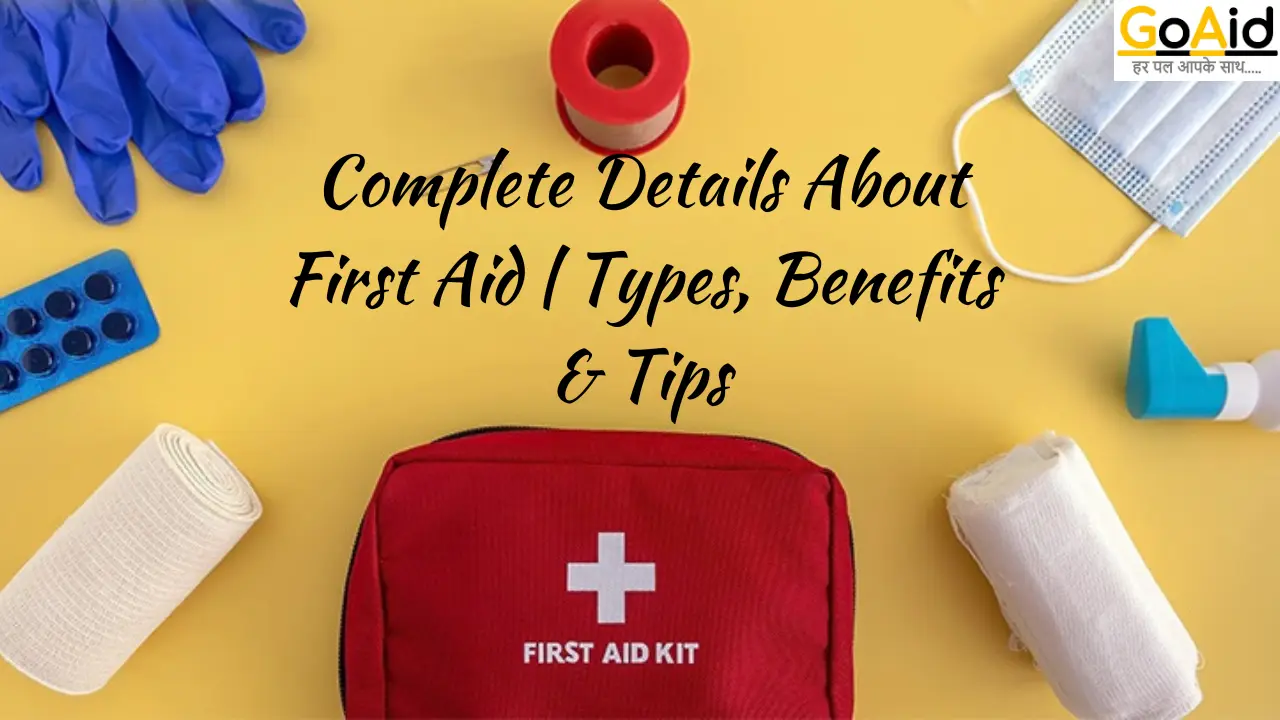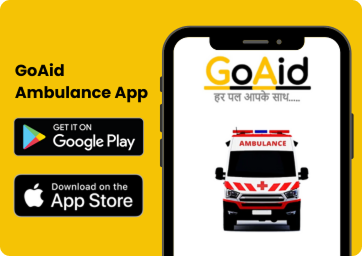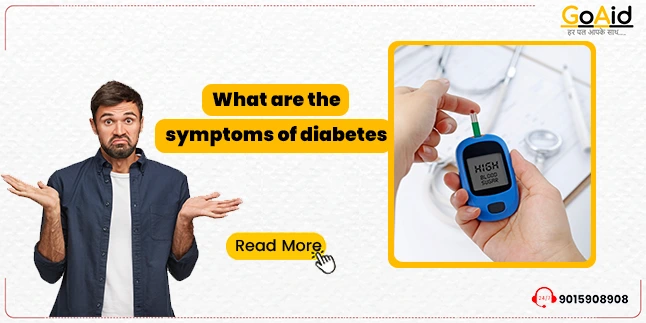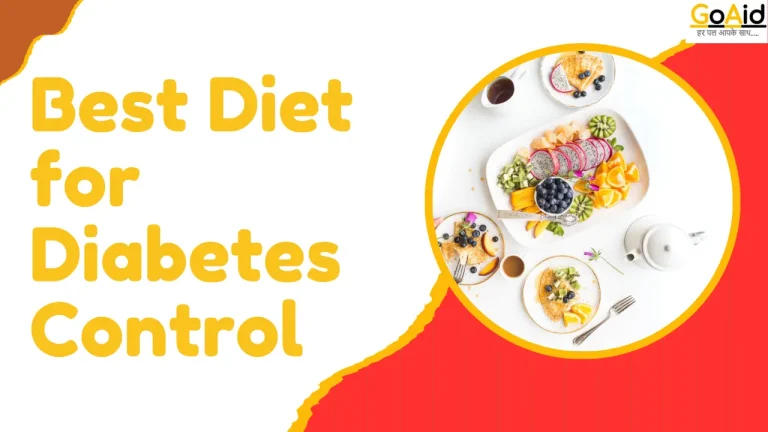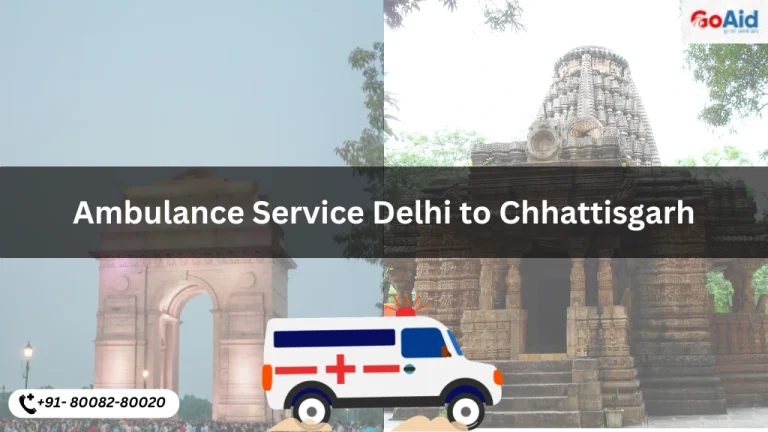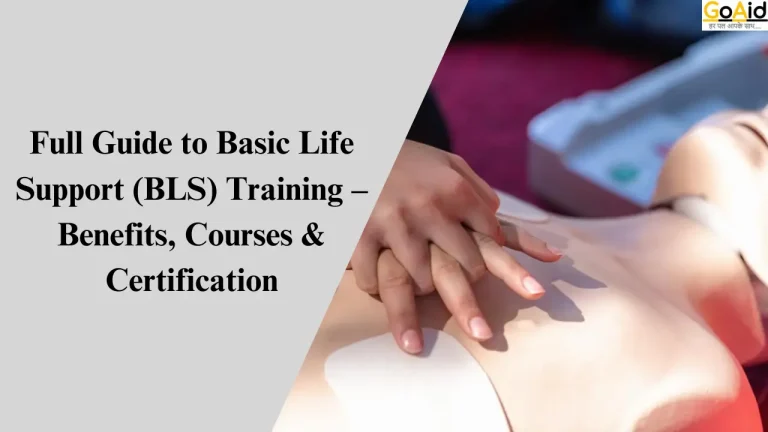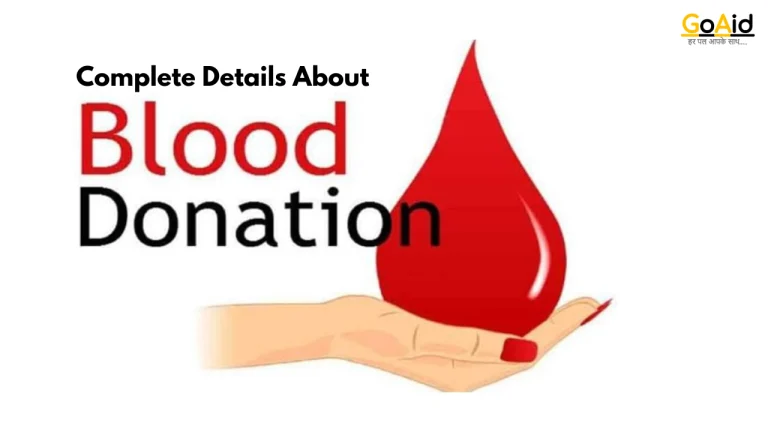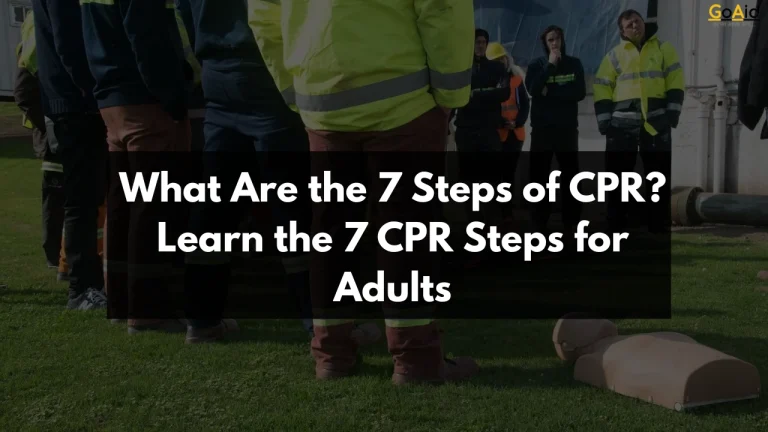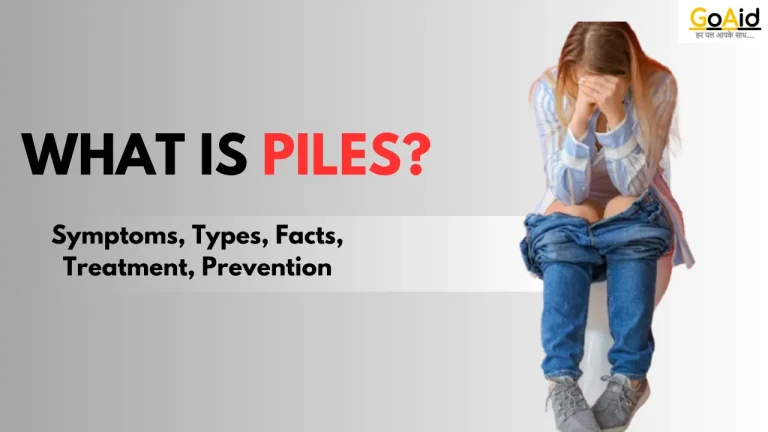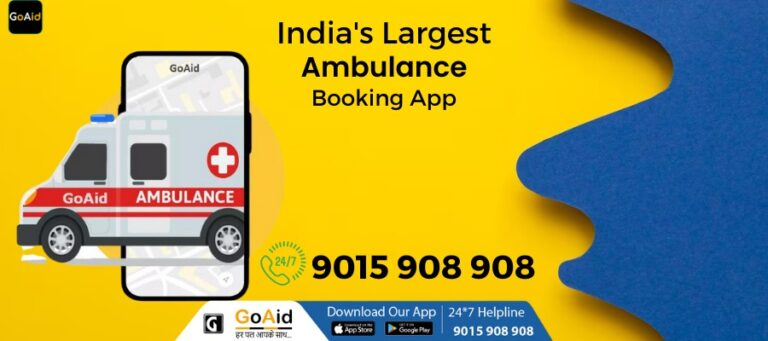In every part of the world, we can see many people suffering from road accidents, fetal diseases, heart attacks, and so many life-taking instances. In that particular period, there are a few people who know what to do perfectly & they perform First aid as they can.
First Aid is life-saving and anyone can learn it even if they are not a doctor or do not have a medical background. This is why, in this blog, we have added all the details about First Aid and Top 20 First Aid tips. Through this blog, youŌĆÖll be getting all the details about what is first aid, its features, benefits, different types, first aid tips, and so on. If you are also excited to learn about first aid in deep, then read this blog to the end.
So, letŌĆÖs start-
What is First Aid?
First aid is the immediate care provided to an individual suffering from a sudden illness or injury until full medical treatment is available. It includes simple techniques that can be performed with minimal equipment.
The primary goal of first aid is to preserve life, prevent the condition from worsening, and promote recovery. Key first aid practices involve assessing the situation, calling for professional help, and addressing issues such as bleeding, fractures, burns, and shock.
Understanding basic first aid procedures is crucial for everyone, as timely intervention can significantly impact the outcome of many emergencies.
Why do we need First Aid?
These are the key reasons why we need the First Aid:
1. Preserving Life
The foremost aim of first aid is to save lives. In emergencies, timely and appropriate first aid can be the difference between life and death. For instance, performing CPR on a person in cardiac arrest can maintain blood flow to vital organs until professional medical help arrives.
2. Preventing Condition from Worsening
First aid helps stabilize an individual’s condition and prevent further harm. For example, immobilizing a fractured limb can prevent further injury, and applying pressure to a bleeding wound can prevent excessive blood loss.
3. Promoting Recovery
Early intervention can speed up the recovery process. Proper wound care can reduce the risk of infection, and managing shock can improve the overall prognosis for the patient.
4. Providing Comfort
Even if the injury or illness is not life-threatening, first aid can provide reassurance and comfort to the injured person. Addressing pain, anxiety, and stress can have a positive psychological impact, helping the person feel more secure and cared for.
5. Enabling Prompt Medical Attention
First aid often includes calling emergency services and providing vital information to healthcare professionals upon their arrival. Accurate and timely information about the incident and the initial steps taken can significantly aid in further medical treatment.
6. Reducing the Severity of Injuries
Proper first aid can mitigate the severity of injuries. For example, cooling a burn immediately can reduce skin damage, and flushing the eyes with water after exposure to harmful substances can prevent severe eye damage.
7. Promoting Safety Awareness
Learning first aid increases safety awareness among individuals and communities. It encourages people to be more mindful of potential hazards and take proactive steps to prevent accidents and injuries.
8. Empowering Individuals
Knowledge of first aid empowers individuals to act confidently and effectively in emergencies. This empowerment can lead to a more responsive and capable community, where members are prepared to assist each other in times of need.
Read More: Importance of Regular Health Check-Ups
Different types of First Aid
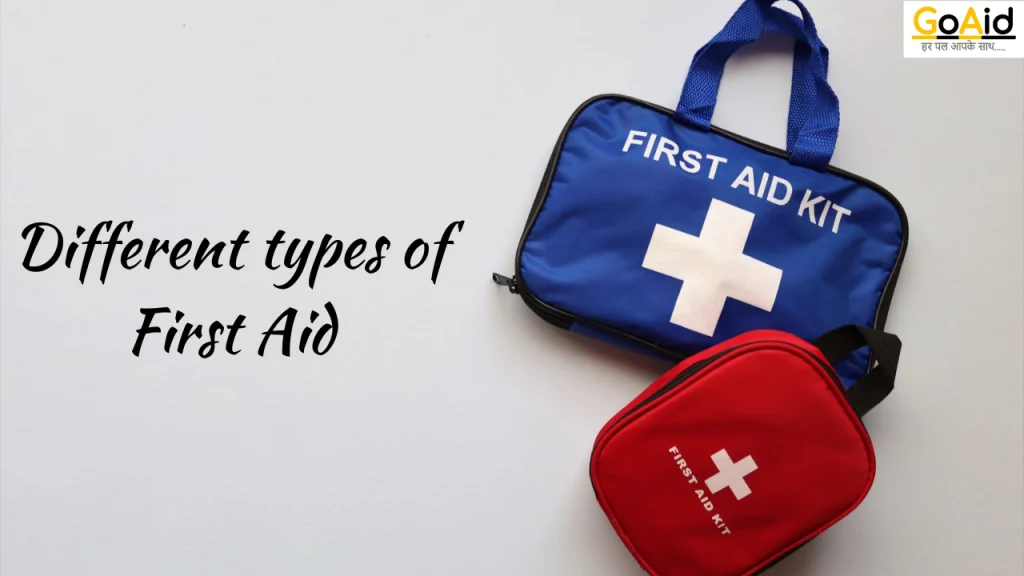
There are many types of first aid we can see performing in our day-to-day routines. This is why numbering the exact types of first aid is hard, but we have named some major types of first aid below:
1. Cardiopulmonary Resuscitation (CPR)
CPR is a lifesaving technique used when an individual’s breathing or heartbeat has stopped. It involves chest compressions and rescue breaths to maintain circulation and oxygenation until advanced medical help arrives.
Specification:
- Perform chest compressions at a depth of 2 inches.
- Provide compressions at a rate of 100-120 per minute.
- Deliver rescue breaths after every 30 compressions.
- Ensure the airway is clear before giving breaths.
- Use an automated external defibrillator (AED) if available.
Aim/s to Perform This Type of First Aid:
- Maintain blood flow to vital organs.
- Restore normal breathing and heartbeat.
- Increase the chances of survival until professional help arrives.
2. Bleeding Control
Bleeding control involves techniques to stop or minimize bleeding from wounds. It includes applying pressure, using dressings or bandages, and potentially applying a tourniquet for severe bleeding.
Specification:
- Apply direct pressure to the wound.
- Elevate the injured area if possible.
- Use clean dressings or bandages.
- Apply a tourniquet if necessary and trained.
- Keep the person calm and still.
Aim/s to Perform This Type of First Aid:
- Prevent excessive blood loss.
- Stabilize the injured area.
- Reduce the risk of shock and further complications.
3. Burn Treatment
First aid for burns involves cooling the burn, protecting the area, and preventing infection. Immediate action can reduce the severity and complications of burns.
Specification:
- Cool the burn with running water for 10-20 minutes.
- Cover with a sterile, non-stick dressing.
- Avoid using ice, creams, or oils.
- Remove any tight clothing or jewelry near the burn.
- Seek medical help for severe burns.
Aim/s to Perform This Type of First Aid:
- Reduce pain and tissue damage.
- Prevent infection.
- Promote faster healing.
Also Read: Introduction to the Sitting Positions You Should Know
4. Choking Relief
Choking relief aims to expel an obstruction from the airway. Techniques vary based on the age and consciousness of the individual.
Specification:
- Perform the Heimlich maneuver for adults and children.
- Use back blows and chest thrusts for infants.
- Continue until the obstruction is cleared.
- Monitor for breathing and consciousness.
- Call for emergency help if needed.
Aim/s to Perform This Type of First Aid:
- Clear the airway to restore normal breathing.
- Prevent asphyxiation.
- Maintain oxygen supply to vital organs.
5. Fracture and Sprain Management
First aid for fractures and sprains involves immobilizing the injured area, reducing swelling, and preventing further injury.
Specification:
- Immobilize the injured area with a splint or sling.
- Apply ice to reduce swelling.
- Elevate the injured limb if possible.
- Avoid moving the person unless necessary.
- Seek medical help for proper diagnosis and treatment.
Aim/s to Perform This Type of First Aid:
- Stabilize the injury.
- Minimize pain and swelling.
- Prevent further damage.
6. Shock Management
Shock management involves recognizing signs of shock and taking steps to maintain blood flow and oxygenation to vital organs until medical help arrives.
Specification:
- Lay the person down and elevate their legs.
- Keep the person warm with blankets.
- Monitor breathing and consciousness.
- Do not give food or drink.
- Seek emergency medical help.
Aim/s to Perform This Type of First Aid:
- Maintain blood flow to vital organs.
- Prevent the condition from worsening.
- Increase the chances of recovery.
7. First Aid for Poisoning
First aid for poisoning involves identifying the poison and taking appropriate steps to minimize its effects while waiting for professional medical help.
Specification:
- Identify the poison if possible.
- Call poison control or emergency services.
- Do not induce vomiting unless instructed.
- Administer activated charcoal if advised.
- Provide supportive care and monitor the person.
Aim/s to Perform This Type of First Aid:
- Reduce the absorption of the poison.
- Stabilize the person until help arrives.
- Provide accurate information to healthcare providers.
8. First Aid for Allergic Reactions
First aid for allergic reactions focuses on managing symptoms and preventing the reaction from becoming life-threatening.
Specification:
- Administer an epinephrine auto-injector if available.
- Call emergency services immediately.
- Keep the person calm and monitor their condition.
- Avoid allergens and remove them if possible.
- Provide antihistamines for mild reactions.
Aim/s to Perform This Type of First Aid:
- Stop the allergic reaction.
- Maintain airway and breathing.
- Seek professional medical treatment promptly.
9. First Aid for Heart Attacks
First aid for heart attacks involves recognizing symptoms, providing aspirin if appropriate, and ensuring the person receives immediate medical attention.
Specification:
- Call emergency services immediately.
- Keep the person calm and seated.
- Provide aspirin to chew if not allergic.
- Monitor breathing and pulse.
- Be ready to perform CPR if needed.
Aim/s to Perform This Type of First Aid:
- Maintain circulation and oxygenation.
- Reduce damage to the heart muscle.
- Ensure timely medical intervention.
10. First Aid for Strokes
First aid for strokes involves recognizing symptoms and ensuring the person receives immediate medical attention to minimize brain damage.
Specification:
- Call emergency services immediately.
- Keep the person comfortable and at rest.
- Note the time of symptom onset.
- Monitor consciousness and breathing.
- Avoid giving food or drink.
Aim/s to Perform This Type of First Aid:
- Minimize brain damage.
- Ensure prompt medical treatment.
- Support vital functions until help arrives.
11. First Aid for Heat Exhaustion and Heat Stroke
First aid for heat-related illnesses involves cooling the person down and preventing the condition from progressing to a more severe stage.
Specification:
- Move the person to a cool place.
- Remove excess clothing.
- Provide cool fluids for hydration.
- Use cool compresses or a cool bath.
- Seek medical help for heat stroke.
Aim/s to Perform This Type of First Aid:
- Lower body temperature.
- Prevent heat stroke from worsening.
- Ensure hydration and recovery.
Read More: 7 Most Common Diseases in Summer | Symptoms, Causes, Treatment / Cure ŌĆō A Complete Guide
12. First Aid for Hypothermia
First aid for hypothermia involves gradually warming the person to prevent further heat loss and stabilizing their condition until medical help arrives.
Specification:
- Move the person to a warm place.
- Remove wet clothing.
- Wrap the person in warm blankets.
- Offer warm fluids if conscious.
- Avoid direct heat sources.
Aim/s to Perform This Type of First Aid:
- Restore normal body temperature.
- Prevent further heat loss.
- Support recovery and prevent complications.
13. First Aid for Seizures
First aid for seizures involves ensuring the personŌĆÖs safety and preventing injury during the seizure.
Specification:
- Clear the area of harmful objects.
- Cushion the person’s head.
- Roll the person onto their side.
- Do not restrain or put anything in their mouth.
- Seek medical help if the seizure lasts more than five minutes.
Aim/s to Perform This Type of First Aid:
- Protect the person from injury.
- Maintain a clear airway.
- Ensure proper medical follow-up.
Benefits of First Aid
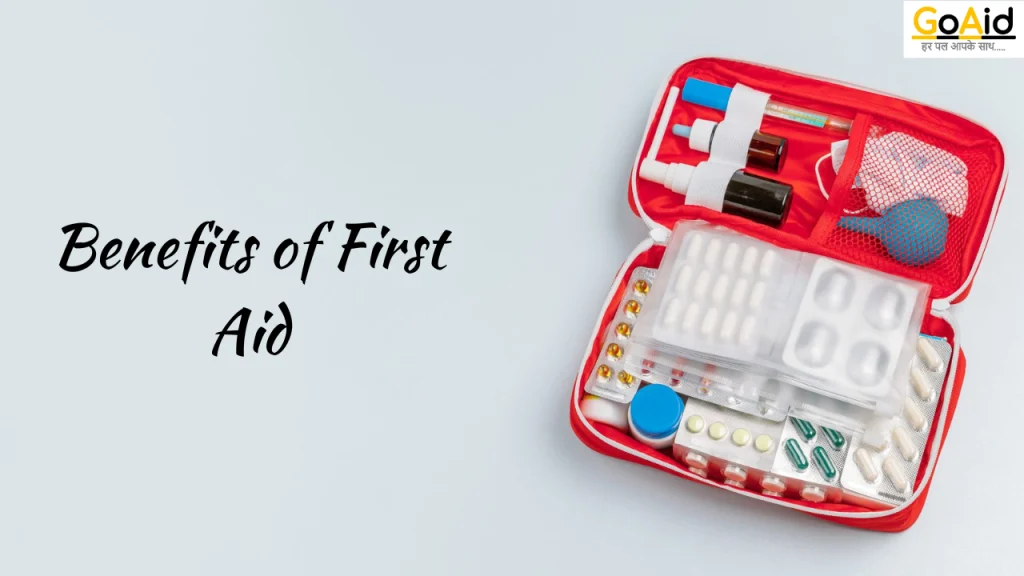
These are the key benefits of performing First Aid:
- Saves Lives
First aid knowledge can be crucial in life-threatening situations. Immediate action, such as CPR, can keep an individual alive until professional help arrives, significantly increasing their chances of survival.
- Reduces Recovery Time
Proper first aid can prevent an injury from worsening and promote quicker recovery. For instance, treating a wound properly can prevent infection and complications, leading to faster healing.
- Prevents Situations from Worsening
Timely first aid intervention can stabilize a person’s condition and prevent complications. For example, controlling bleeding quickly can prevent excessive blood loss and shock.
- Relieves Pain
Basic first-aid techniques can help alleviate pain and discomfort. For example, applying a cold compress to a sprain or administering pain relief can reduce immediate pain.
- Provides Comfort and Reassurance
Knowing how to administer first aid can provide comfort and reassurance to the injured person, reducing their anxiety and stress in an emergency.
- Increases Safety Awareness
Learning first aid enhances one’s awareness of potential hazards and promotes a culture of safety, encouraging preventative measures and risk reduction.
- Empowers Individuals
Having first aid skills empowers individuals to act confidently and effectively during emergencies, making them more capable of helping others in need.
- Enhances Community Resilience
Communities where many individuals are trained in first aid are more resilient. They can respond collectively and effectively to emergencies, reducing the overall impact of accidents and injuries.
- Facilitates Effective Communication with Emergency Services
First aid training often includes learning how to communicate effectively with emergency services and providing clear and accurate information that can aid in the quick and efficient delivery of professional medical care.
- Promotes Mental Health and Well-being
The ability to help others in distress can improve one’s mental health and well-being, fostering a sense of purpose and community. Additionally, knowing that one can handle emergencies reduces personal anxiety about potential accidents or health issues.
Also Read: Dehydration: Causes, Treatment, Prevention and How Much Water You Should Drink
Top 20 First Aid Tips
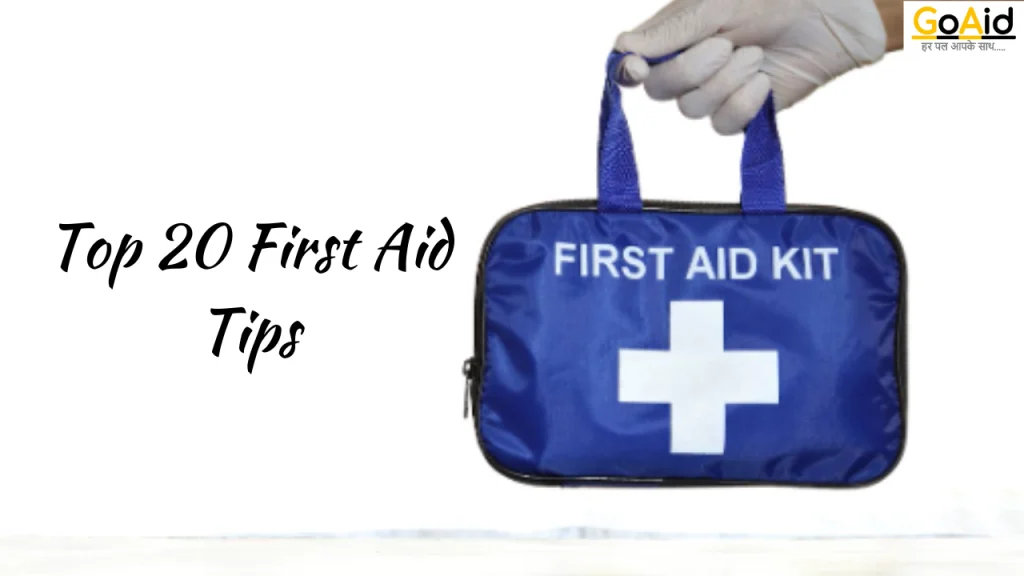
These are the Top 20 First Aid Tips:
1. Assess the Scene Safety
Before approaching the injured person, ensure the area is safe for both you and them. Look out for any potential dangers like traffic, fire, or hazardous materials.
2. Check the Person’s Responsiveness
Gently tap the person and ask loudly, “Are you okay?” Check for any response or movement. If no response, assume they need help and proceed to assess their condition.
3. Call for Emergency Assistance
If the person is unconscious or seriously injured, call emergency services immediately. Provide clear information about the situation, location, and any specific details like the nature of injuries.
4. Perform Initial Assessment
Check the person’s airway, breathing, and circulation (ABCs). Ensure the airway is clear, check for breathing, and assess circulation by checking for a pulse or signs of severe bleeding.
5. Control Bleeding
Apply direct pressure to any visible wounds to control bleeding. Use a clean cloth or sterile dressing and maintain pressure until the bleeding stops or help arrives.
6. Protect Against Infection
If providing wound care, wash your hands thoroughly or use gloves if available. Avoid touching the wound directly to prevent infection transmission.
7. Keep the Person Calm
Reassure the injured person and keep them calm to help reduce anxiety and lower their heart rate. Speak calmly and provide reassurance that help is on the way.
8. Monitor Breathing
Continuously monitor the person’s breathing. If they stop breathing, initiate CPR immediately and continue until professional help arrives or the person starts breathing on their own.
9. Support Head and Neck Injuries
If you suspect a head, neck, or spinal injury, avoid moving the person’s head and neck. Keep them still and supported in their current position until medical professionals arrive.
10. Maintain Body Temperature
Keep the person warm or cool depending on the situation. Use blankets or provide shade to regulate body temperature and prevent further heat loss or overheating.
Also Read: Introduction to All Details about Heart Care
11. Record Vital Information
Note any important details such as the person’s condition changes, first aid interventions performed, and the time they occurred. This information can assist medical professionals upon arrival.
12. Provide Comfort
Offer reassurance and emotional support to the injured person. Let them know you are there to help and keep them as comfortable as possible while waiting for medical help.
13. Follow Basic First Aid Steps
Adhere to the basic principles of first aid: assess the situation, call for help, provide care within your scope of training, and continue monitoring the person until help arrives.
14. Use Personal Protective Equipment (PPE)
If available, use gloves or other PPE to protect yourself from bodily fluids and potential infection when providing first aid, especially when dealing with open wounds.
15. Reassess Regularly
Continuously reassess the person’s condition and make adjustments to your first aid approach as needed. Conditions can change rapidly, so stay vigilant.
16. Be Prepared for Shock
Recognize the signs of shock, such as pale skin, rapid pulse, and shallow breathing. Keep the person lying down with their legs elevated and covered with a blanket to help maintain body heat.
17. Communicate Clearly
Provide clear and concise information to emergency responders or medical professionals when they arrive. Relay important details about the person’s condition and any first aid measures taken.
18. Know When to Stop
If the person’s condition stabilizes or worsens, be prepared to adjust your first aid actions accordingly. Follow instructions from medical professionals once they take over.
19. Comfort the Injured Person
Offer emotional support and reassurance throughout the first aid process. Let them know they are being cared for and that help is on the way.
20. Stay Calm and Focused
Maintain your composure and focus on the tasks at hand. Staying calm helps you provide effective first aid and support to the injured person until professional help arrives.
Book Ambulance: GoAid Ambulance Service
Conclusion
Knowing essential first aid tips is invaluable as it empowers individuals to respond effectively in emergencies, potentially saving lives and minimizing the severity of injuries. From controlling bleeding and performing CPR to recognizing symptoms of serious conditions like strokes and heart attacks, these skills can make a critical difference before professional help arrives.
Everyone must learn basic first aid techniques, as quick actions can stabilize a person’s condition and prevent complications. Remember, if you have questions about first aid tips or techniques, feel free to ask in the comment box below. Being prepared can make a significant impact in emergencies.
FAQs related to First Aid Tips everyone should know
Apply direct pressure to the wound using a clean cloth or bandage to control bleeding. Elevate the injured area if possible and maintain pressure until the bleeding stops or medical help arrives. This helps reduce blood loss and prevents shock.
Look for signs such as chest pain or discomfort, shortness of breath, and sweating. If you suspect a heart attack, call emergency services immediately. Have the person sit or lie down and provide aspirin if they are not allergic while awaiting professional help.
For adults and children, perform abdominal thrusts (Heimlich maneuver) to dislodge the obstruction. For infants, use back blows and chest thrusts. If the person becomes unconscious, begin CPR immediately and continue until help arrives.
Immediately cool the burn with running water for 10-20 minutes to reduce pain and prevent further damage. Cover the burn with a sterile, non-stick dressing and seek medical attention for severe burns or those affecting sensitive areas.
An EpiPen is used for severe allergic reactions (anaphylaxis). Administer it immediately if someone shows signs such as difficulty breathing, swelling of the face or throat, and a rapid heartbeat. Call emergency services after using the EpiPen.
Keep the person safe by moving objects away and cushioning their head. Do not restrain them or put anything in their mouth. Time the seizure and call for medical help if it lasts longer than five minutes or if it’s their first seizure.
Place the heel of one hand on the center of the person’s chest, then place the other hand on top. Push hard and fast, aiming for at least 100 compressions per minute. After 30 compressions, give two rescue breaths if trained to do so.
Move them to a cool place, remove excess clothing, and provide fluids to drink. Apply cool compresses to the skin and fan them to help cool down. If symptoms worsen or they show signs of heat stroke (like confusion or loss of consciousness), seek medical help immediately.
Shock signs include pale, clammy skin, rapid breathing, and a weak pulse. Lay the person down with their legs elevated, cover them with a blanket, and reassure them. Seek emergency medical help promptly, as shock can be life-threatening.
Immobilize the injured area by supporting it with a splint or sling. Apply ice packs wrapped in cloth to reduce swelling and pain. Avoid moving the person unnecessarily and seek medical attention for proper diagnosis and treatment.

